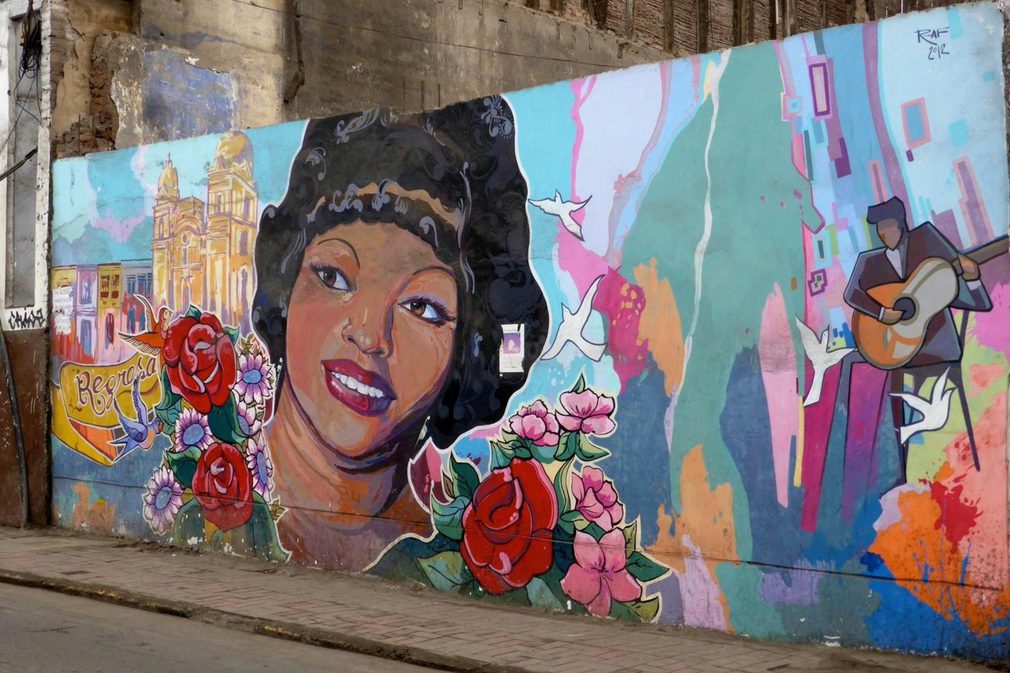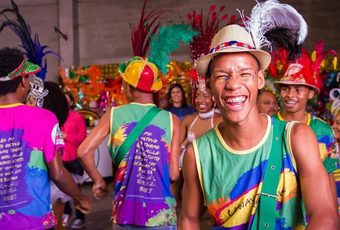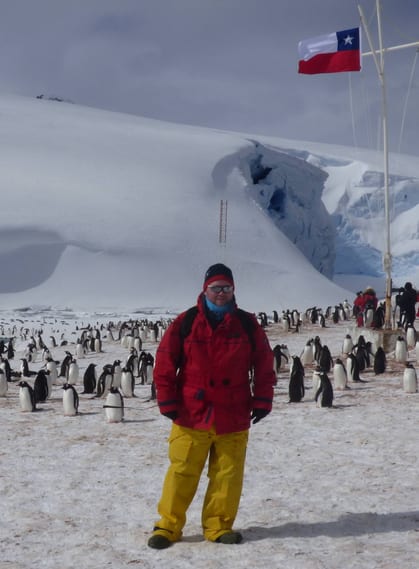Learning to love Lima

Lima's a city most visitors to Peru don't like. Or they rattle on through without so much as a backward glance. It's not surprising, like many large Latin American cities, Lima isn't a place which invites you to fall in love with it. It's chaotic, busy, gritty, noisy and for much of the year it's swathed in a coastal mist, or is it smog? However, with a little effort and the right introduction, Lima proves to be a genuinely great city.
I think it was around the sixth time I came to Lima that I actually enjoyed it for the first time. Previously I had always been getting ready to move onto more exciting pastures, or making a brief stop before heading home, and it had never really convinced me it was something more than a sprawling mass of grey concrete, (matching the endless grey skies). The sixth time was different, and I had a lot more fun. This may have been in part due to the accidental coincidence of the Copa America final taking place - it's not every day you get to watch Brazil play Argentina for less than £20 - and in part due to the fact a friend from Cusco was there, and he knew all the best bars in Barranco... Subsequent visits had seen me uncover great restaurants and museums, so I knew there were more than a few hidden gems. With just the one full day this time around, and as it was my wife's first time in Peru, it seemed sensible to spend the day with someone who really knew Lima's secrets.
We started off with a stroll through Miraflores, the wealthy suburb which hosts the majority of Lima's visitors with its comfortable hotels and superb restaurants. As it was Sunday, some streets were closed for cycling, rollerblading, and an eye catching free-for-all Zumba class, which had a genuinely diverse blend of participants: everyone from little girls to gentlemen who must have qualified for their pension some time ago. They didn't quite all match the pace of the miked-up young man leading the class, but everyone seemed to be having a great time.
We learned about the history of Miraflores as we walked, one of many former agricultural areas in the Rimac river valley, a place of haciendas and crops, before it became the haunt of summer homes for Lima's elite, and eventually blended into another suburb of the metropolitan area. The loose theme of our day would be Lima's development and people, and our guide was keen to show us it was a story with many more layers than just its well-known evolution under the Spanish colonial rule. That said, the Plaza de Armas is still one of the finest examples in the country, and we headed here to take in the fine buildings, though not before visiting a local market in Surquillo, whose stalls groaned with tropical fruits, all parts of cow, and a fair number of the several thousand types of potato grown in Peru.
After admiring the beautiful facades of the cathedral and the Archbishop's Palace, it was time to head off into a less well-trodden area of the city. Barrios Altos may not be an obvious port of call for a visitor, but it holds some intriguing glimpses into the city's past. We stopped off in a small church, where you can buy alfajores from the nuns behind a screen, as you have been able to do for several hundred years. From the mural of Lima's most famous Pena singer, to the rococo facade of an Italian mansion, (whose owner got rich thanks to the import of indentured labour from China following the abolition of slavery), each nugget told another story. Lima, even more than many capitals, is a melting pot of peoples - indigenous, European, African and Asian. Circling back into the historic centre, we rewarded our scholarly efforts with a stop in a fine old hotel, credited with the creation of the pisco sour, Peru's national drink. It seemed only right that we sampled the famous cocktail as a welcome aperitivo prior to heading off to our next port of call, Lince.
The diversity of Lima's inhabitants is matched by the diversity of Peru's cuisine, widely known as the Next Big Thing in world dining. In the quirkily commercial area of Lince, within a couple of minutes' stroll of each other, lies a cluster of restaurants showcasing some of this variety. From the sierra to the selva, we undid all the good work from our walk in short order, with the shrimp chowder from Arequipa a particular highlight. Well, they said it was shrimp, the thing was more like a mid-sized lobster... Coffee beckoned, so we made one last jump to another district, Barranco (of the excellent bars), and found ourselves in a charming cafe with comfy sofas, art books, and some absolutely first rate espresso. Long gone, it seems, are the days of when I first came to Peru: when even in smart restaurants 'el cafe' amounted to no more than a tub of Nescafé on the table. Excellent coffee, great bars, and some lovely art galleries certainly make Barranco a charming spot to while away an afternoon before heading back to Miraflores for a seafront stroll, and the chance to sample some of Peru's finest dining. All in all, the day confirmed to both of us, that Lima is full of intriguing hidden pockets, and with the right person in charge, a varied, intriguing and tasty day here is a must for any visitor to Peru.
Our Peru holidays Get in touch Subscribe to The Pothole
The Pothole is Pura Aventura's popular monthly email. We share what we love, what interests us and what we find challenging. And we don't Photoshop out the bits everyone else does. We like to think our considered opinions provide food for thought, and will sometimes put a smile on your face. They've even been known to make people cry. You can click here to subscribe and, naturally, unsubscribe at any time.
The Pothole is Pura Aventura's popular monthly email. We share what we love, what interests us and what we find challenging. And we don't Photoshop out the bits everyone else does. We like to think our considered opinions provide food for thought, and will sometimes put a smile on your face. They've even been known to make people cry. You can click here to subscribe and, naturally, unsubscribe at any time.








 By
By 
